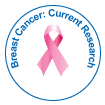Our Group organises 3000+ Global Conferenceseries Events every year across USA, Europe & Asia with support from 1000 more scientific Societies and Publishes 700+ Open Access Journals which contains over 50000 eminent personalities, reputed scientists as editorial board members.
Open Access Journals gaining more Readers and Citations
700 Journals and 15,000,000 Readers Each Journal is getting 25,000+ Readers
Google Scholar citation report
Citations : 114
Breast Cancer: Current Research received 114 citations as per Google Scholar report
Indexed In
- RefSeek
- Hamdard University
- EBSCO A-Z
- Publons
- ICMJE
Useful Links
Recommended Journals
Related Subjects
Share This Page
Epistemology of indigenous healing practice: A micro sociological perspective
4th World Congress on Breast Pathology and Cancer Diagnosis
Angel Arnaout, S Saeed, D Dewar, G Dostaler, J M Aubin, M Namazi, D Gravel, Y Ayroud, G Rockwell and S Robertson
The Ottawa Hospital, Canada
Posters & Accepted Abstracts: Breast Can Curr Res

 Spanish
Spanish  Chinese
Chinese  Russian
Russian  German
German  French
French  Japanese
Japanese  Portuguese
Portuguese  Hindi
Hindi 